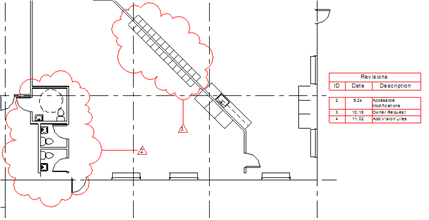You got me Googling again Jonathon ![]()
I agree and think diffing is super valuable. I can see a diffing tool (that has been teased as a PoC a few months ago during the stand) as a great replacement for the old school revision clouds so the receiving party can very easily (no scripting for our less tech savvy users) and quickly generate an overview of the difference between two commits + no need to rely on the due diligence of the sending party to document all changes properly. So the receiving team can see where the changes are and what they entail when the diffing app highlights the new/edited/deleted objects and maybe shows if only the geometry has changed or only the meta deta.
Bye bye manual revision clouds ![]()
